Capital:
Willemstad
Currency
Florin of the Netherlands Antilles
Best time to visit:
all year round
In a word:
Bon bini (welcome)
Vaccines
none
Essential experiences:
Romantic walk on Queen Emma Bridge at sunset to enjoy the magic of Curaçao; Explore the seabed where numerous wrecks covered by coral formations lie; A mojito in the characteristic Willemstad, a UNESCO World Heritage Site
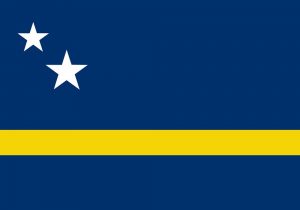
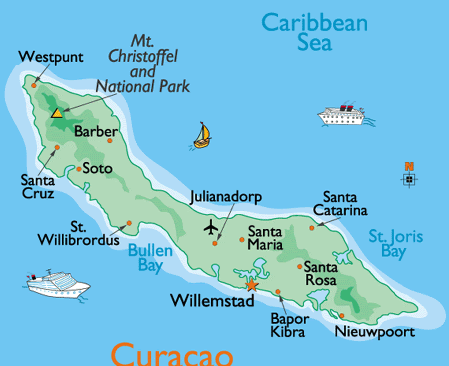
Curacao, off the coast of South America, near the western part of Venezuela, is one of the islands that make up the ABC islands (together with Aruba and Bonaire). With its temperate climate, this island is perfect for a year-round vacation: the islands are off the hurricane route, so you can also go on vacation in June, July, August and September (when it would be better to avoid the Caribbean).
Affectionately called by its inhabitants "Dushi Korsou", or "sweet Curaçao", it is considered in unison a dream destination.
Turquoise sea, white sand beaches, palm trees and blue skies - Curaçao is pure Caribbean! In addition, there is a significant Dutch influence in many places. This originates in the long colonial period of the past and brings some advantages for tourists from countries belonging to the European Union. From the countries of the European Community you can enter with your identity card.
You are spoiled for choice to have fun in Curaçao: snorkeling or diving, relaxing on the beach, tennis, quad biking, visiting the capital Willemstad, included in the list of UNESCO World Heritage Sites, to appreciate the buildings in style Dutch colonial, to visit Fort Amsterdam and Rif Fort which protect the entrance of the Sint Annaabaai strait or just for shopping.
The waters around Curaçao are populated by a large variety of tropical fish, making it an ideal destination for those who love exploring the seabed.
Numerous wrecks lie off its coast covered with coral formations.
The south-east coast is surrounded by a fairly spectacular coral reef that rises 10 m from the seabed forming a terrace where sponges often abound with large dimensions.
The beaches in Curaçao are often private and hotels charge a toll to access them.
There is almost no alternative as public beaches are often unattractive, but you can use the hotel services in exchange for the toll (showers, swimming pools, etc.) which is no small feat.
We land in the beautiful and romantic capital: Willemstad is the capital of Curaçao, a territory that is still part of the Netherlands.
The historic center consists of four neighborhoods: Punda (established in 1634 after the Dutch took over the island from Spain), Otrobanda (city cultural center), Scharloo and Pietermaai.
In Willemstad, its capital, Dutch-style colonial buildings have made Curaçao a UNESCO heritage site. The name of the island derives from the Portuguese "coração", "heart", and contains all the magnificence of its sunsets. Along its streets you will find numerous places to enjoy fantastic Caribbean cocktails prepared with a liqueur made from bitter orange peel. It is the famous "Blue Curaçao", used all over the world for the preparation of prestigious cocktails and long drinks. We take advantage of it immediately to stop at the first bar for a toast! Cheers!
Protected by a large coral reef, it is also free from hurricane fury. Jungle hikes, turquoise-colored dives in the sea and fun-filled evenings are just an example of its vast offer.
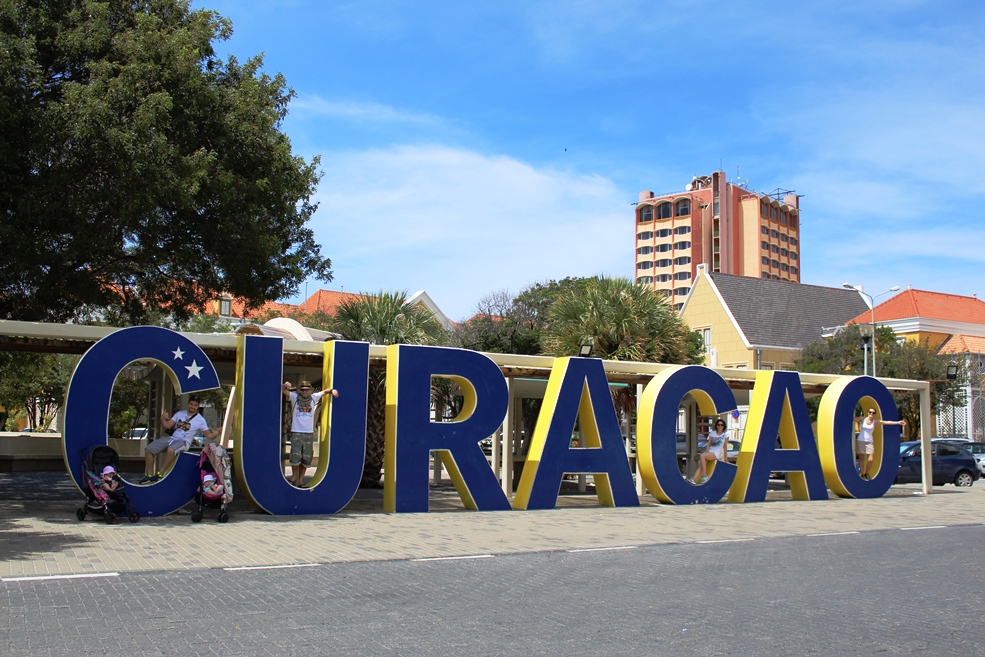
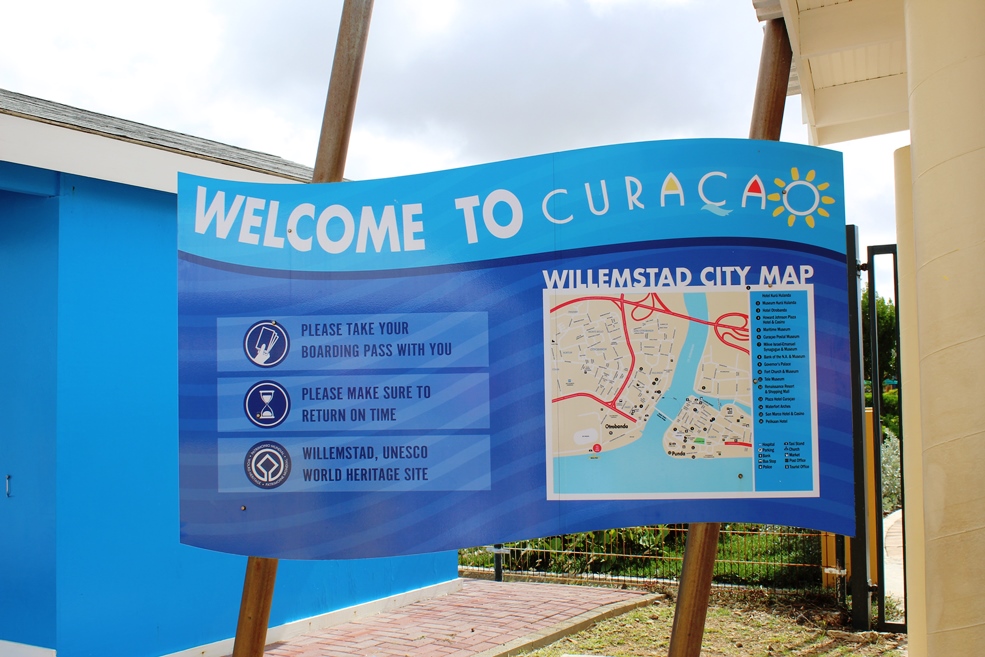
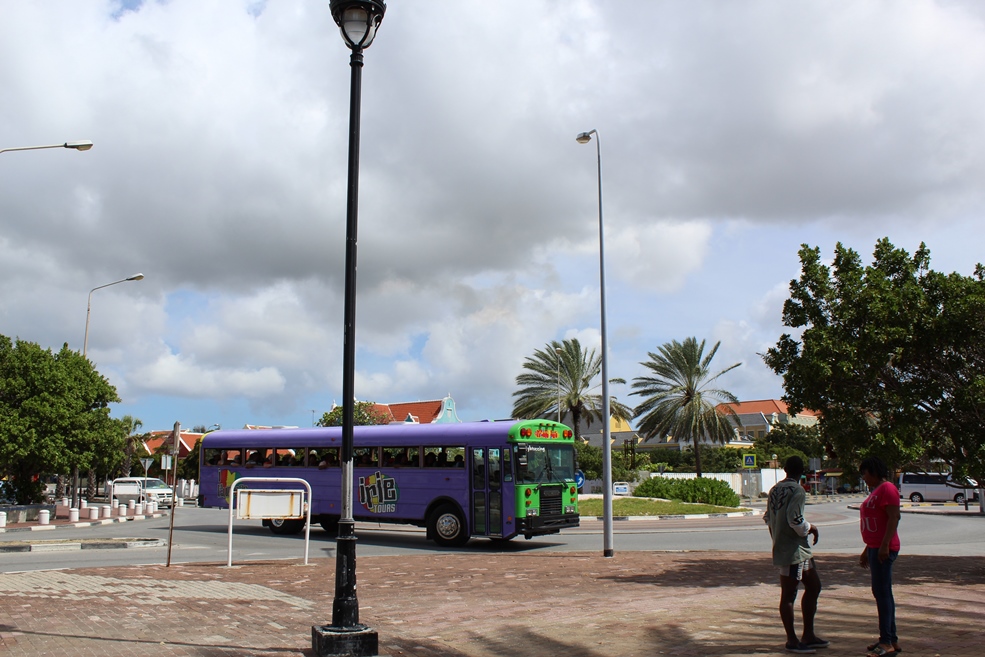
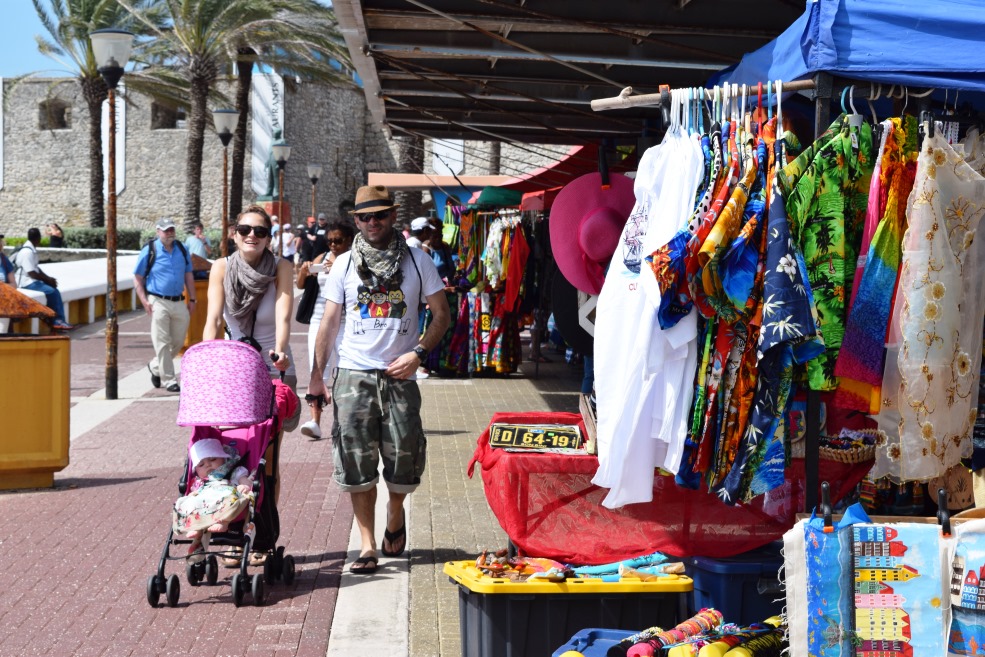
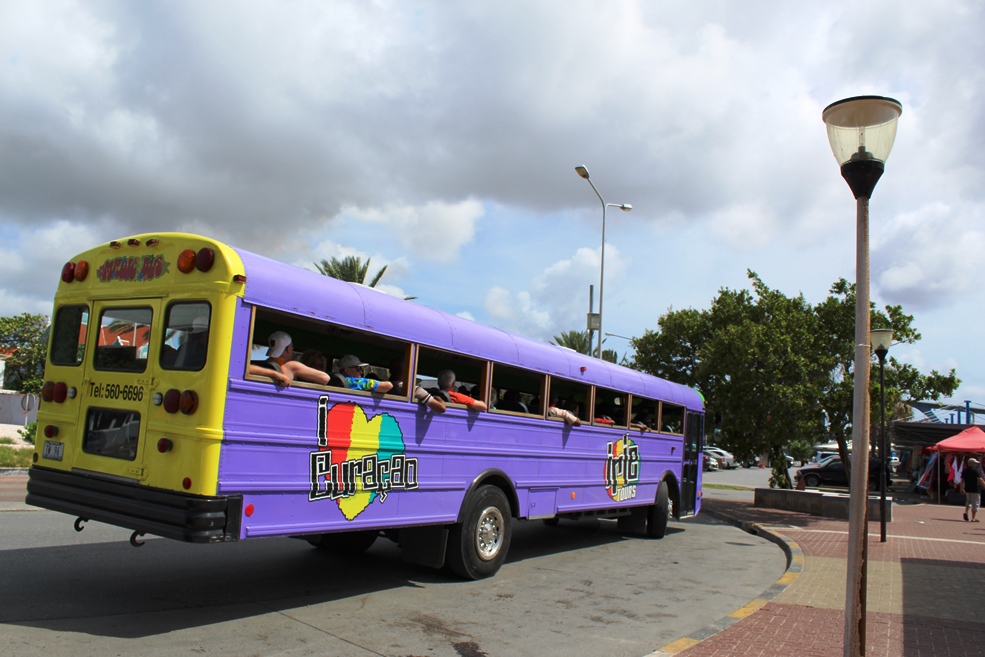
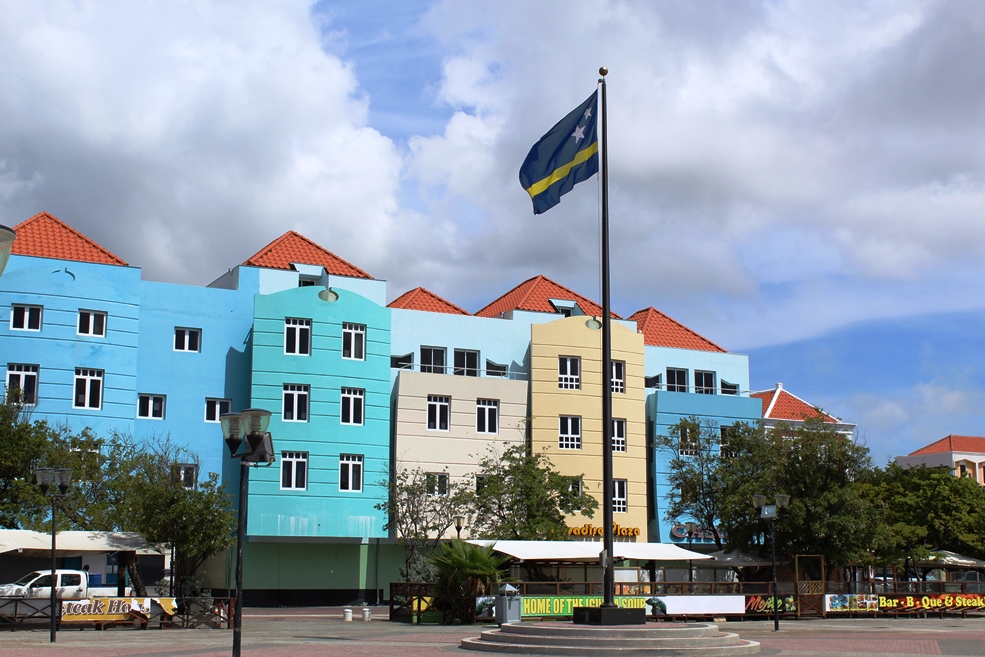
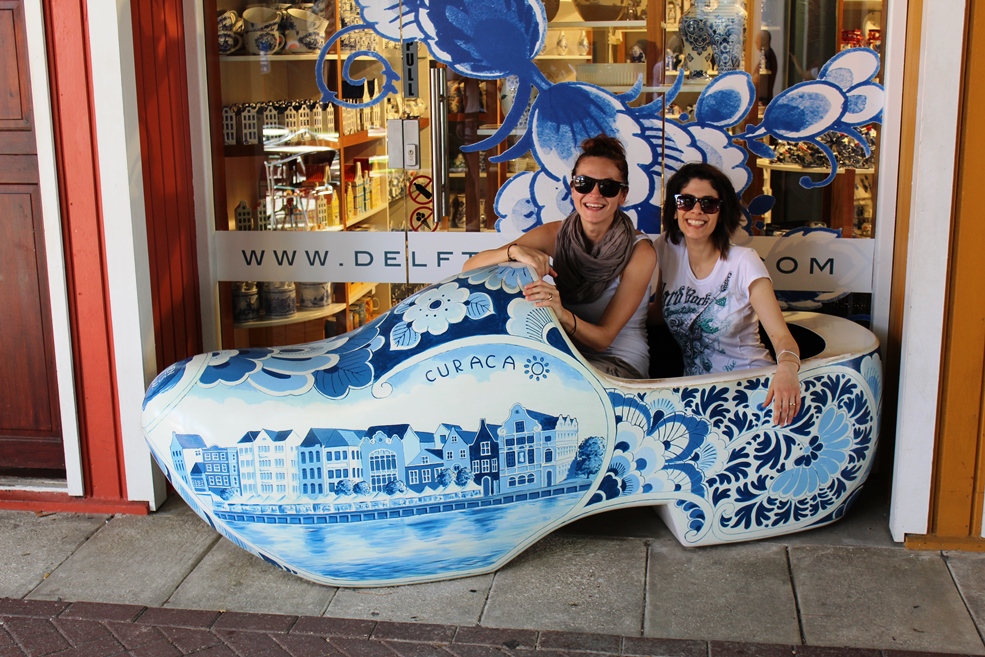

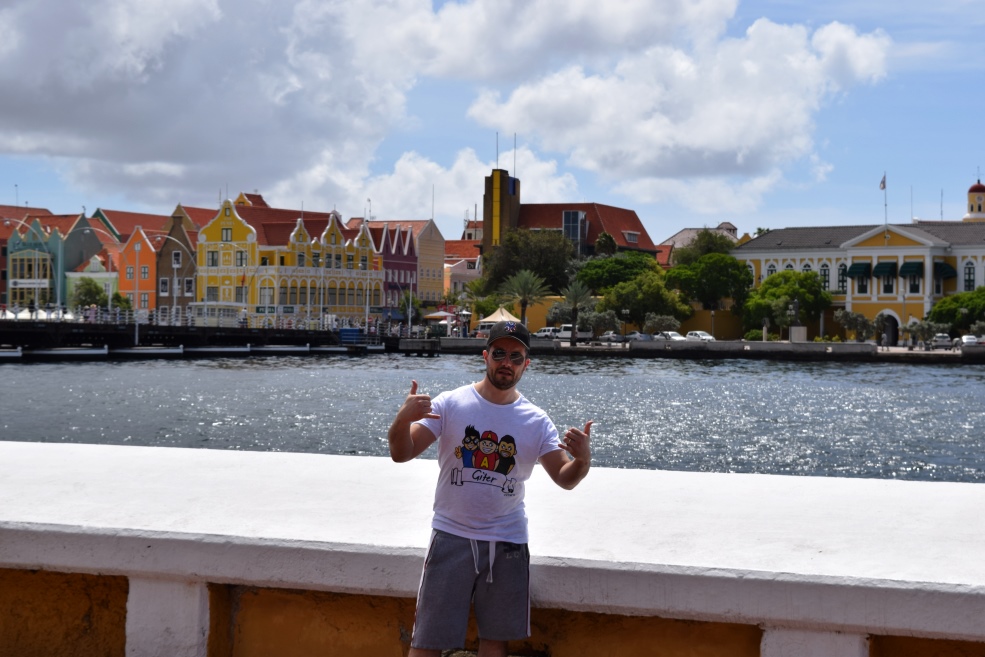
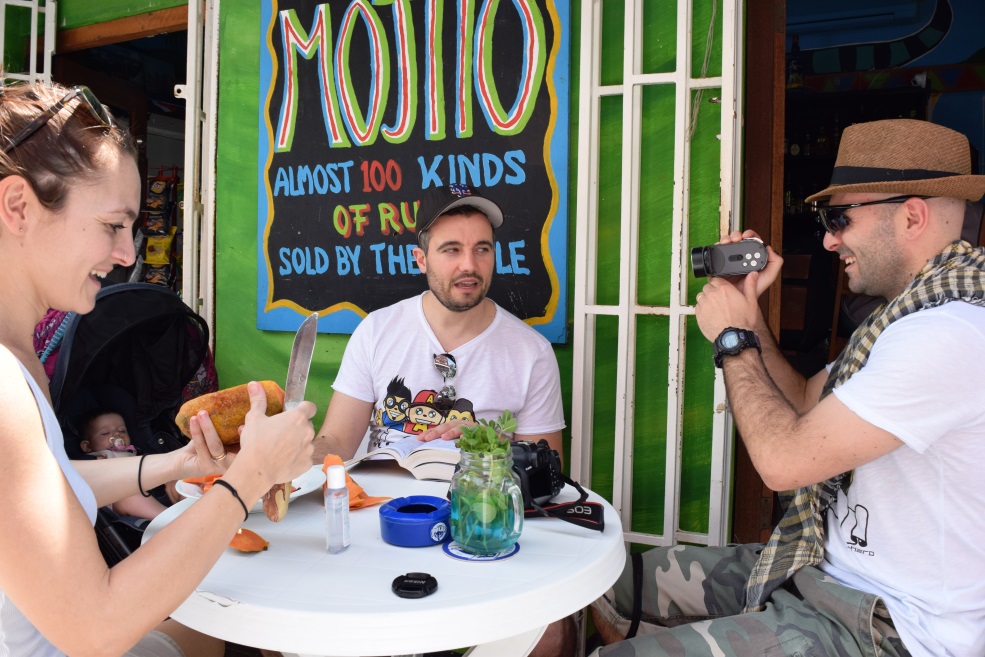
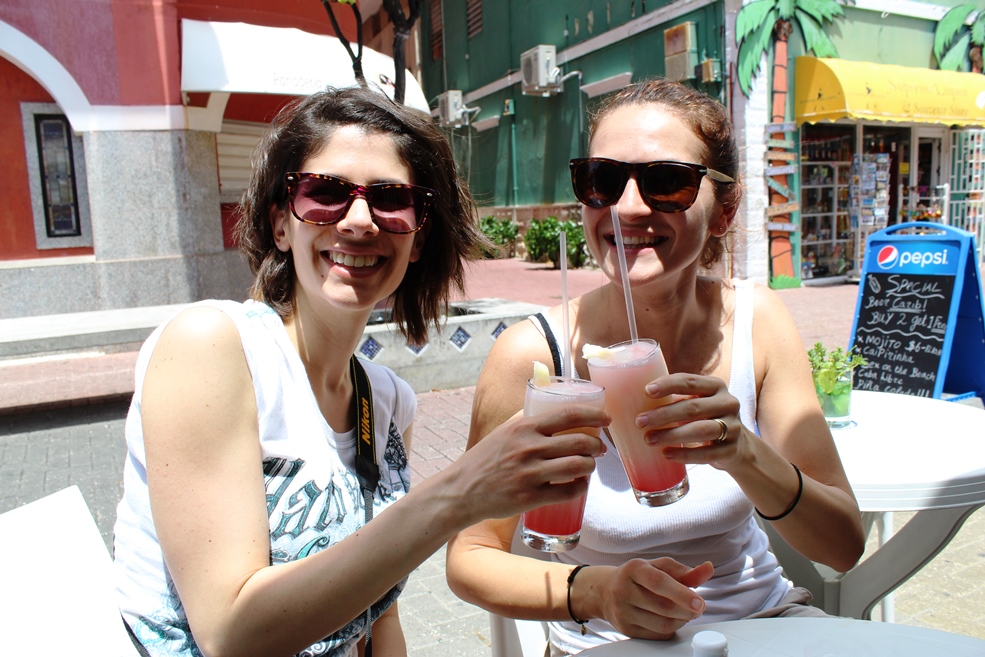
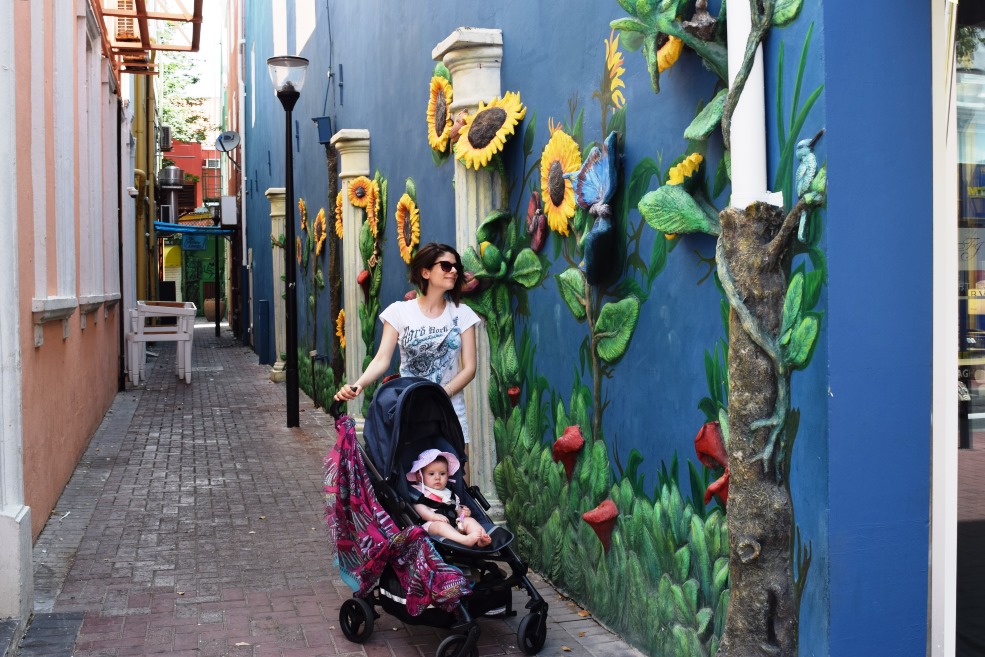
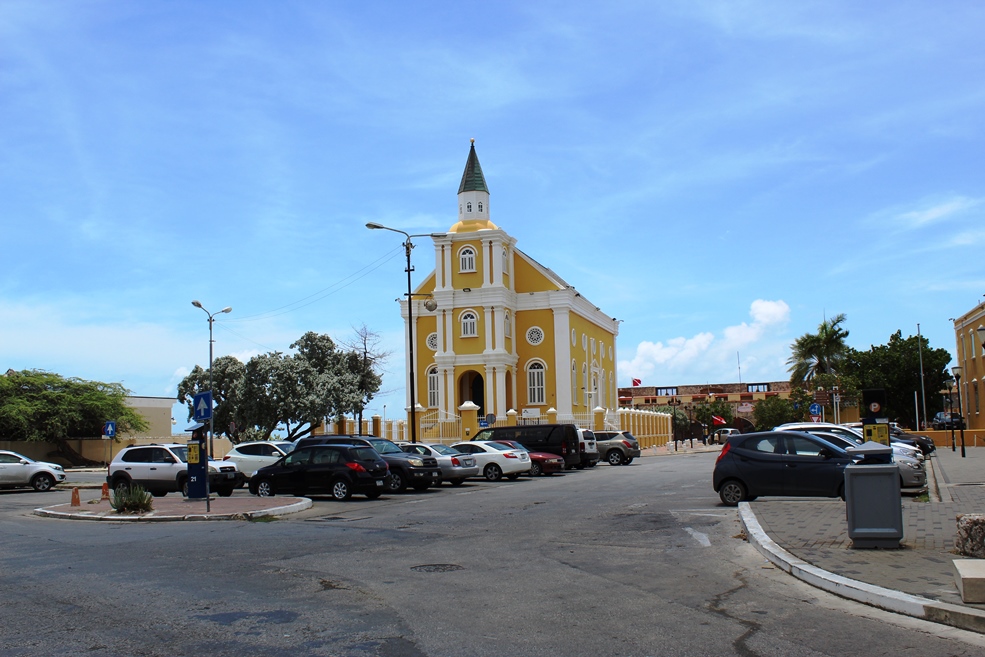

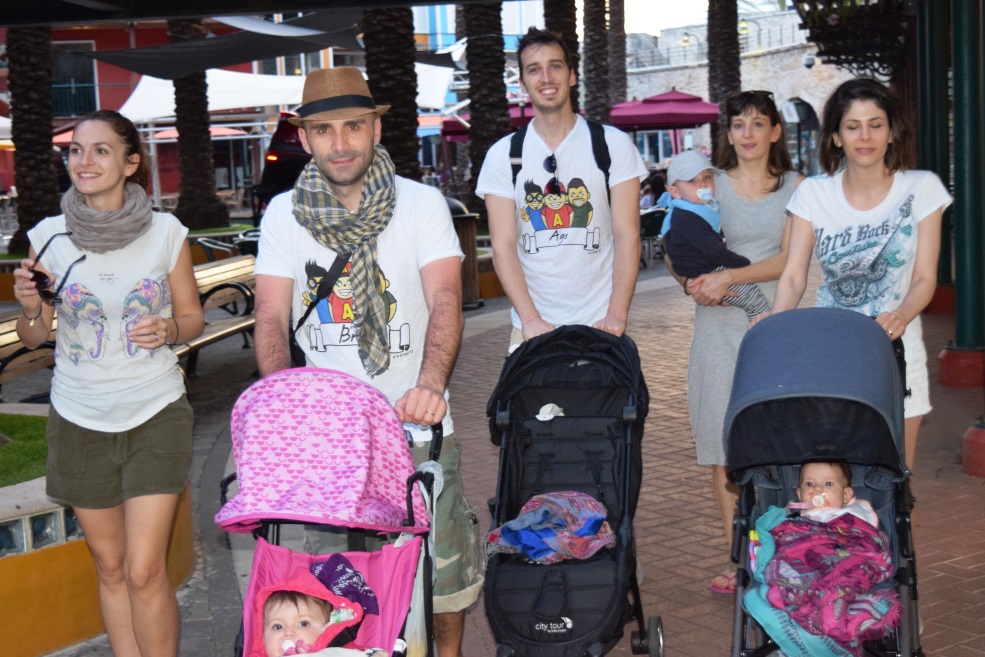
After a pleasant walk through the colorful lanes of the capital, we reach the picturesque Queen Emma Bridge.
It is one of Curaçao's most popular and most photographed attractions, alongside the fantastic picture book beaches. It was built in 1888 by architect Leonard Burlington Smith. The building, popularly known as the "old floating lady", is supported by 16 boats on pontoons.
We cross it just in time because a small yacht is approaching and therefore the bridge is opened while passers-by hurry as they can to avoid getting stuck on it ... but no problem, the ferries (free) come into play immediately which in 4 minutes they lead you from one bank to another!
Don't miss it at sunset!
It is beautifully illuminated together with the surrounding houses. Then the whole environment shines in all the colors of the rainbow and offers an incomparable view. From another Willemstad bridge, the Queen Juliana Bridge, you have a fantastic panoramic view over much of the city. With its 56 meters high it is considered one of the tallest bridges in the world.
There are many places on the island where tourists can find evidence of the colonial era.
The most striking, in addition to some magnificent villas, are certainly the old forts. Eight of these defensive structures have survived to this day. The best preserved is Fort Amsterdam, a UNESCO World Heritage Site, built in 1635 in the port area of Punda.
Today it is the residence of the governor and the seat of government and administrative offices. Built in 1797, Fort Nassau has regulated the opening and closing of the Queen Emma Bridge for many years and has remained in its original state. It is therefore one of the most important tourist attractions of Curaçao.
There are many Venezuelans who work here, moreover we are a few tens of miles from the coasts of the South American state! At the floating market, among the tropical fruit stalls, I chat with some of them who tell me that they spend two months in Curaçao and two in Venezuela (maximum duration tolerated by the visa), they come by boat and sleep on hammocks directly on their stalls because the economic situation of your country is disastrous!
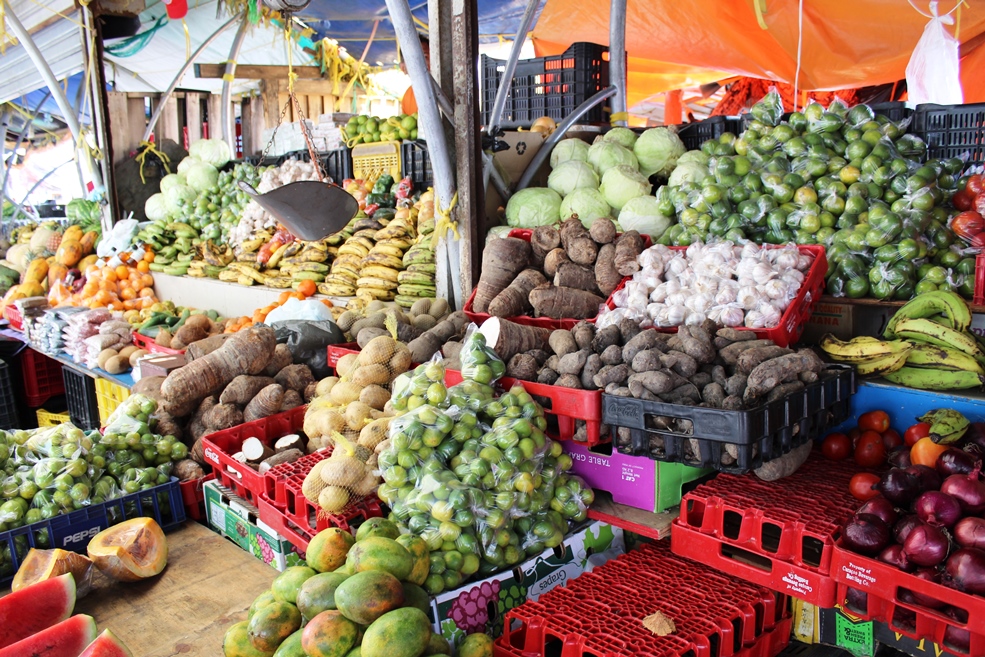
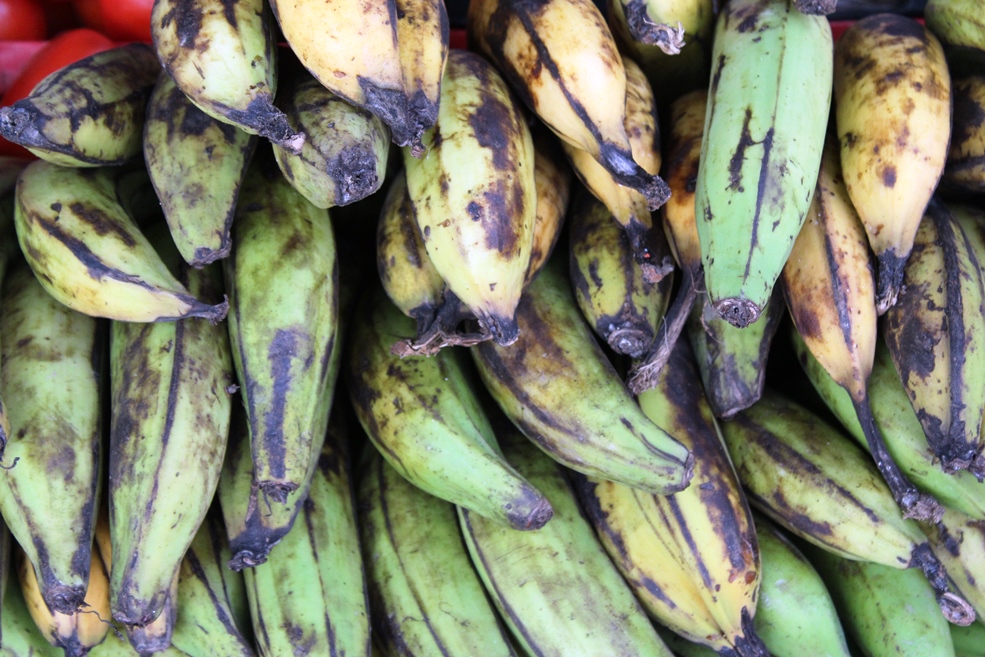

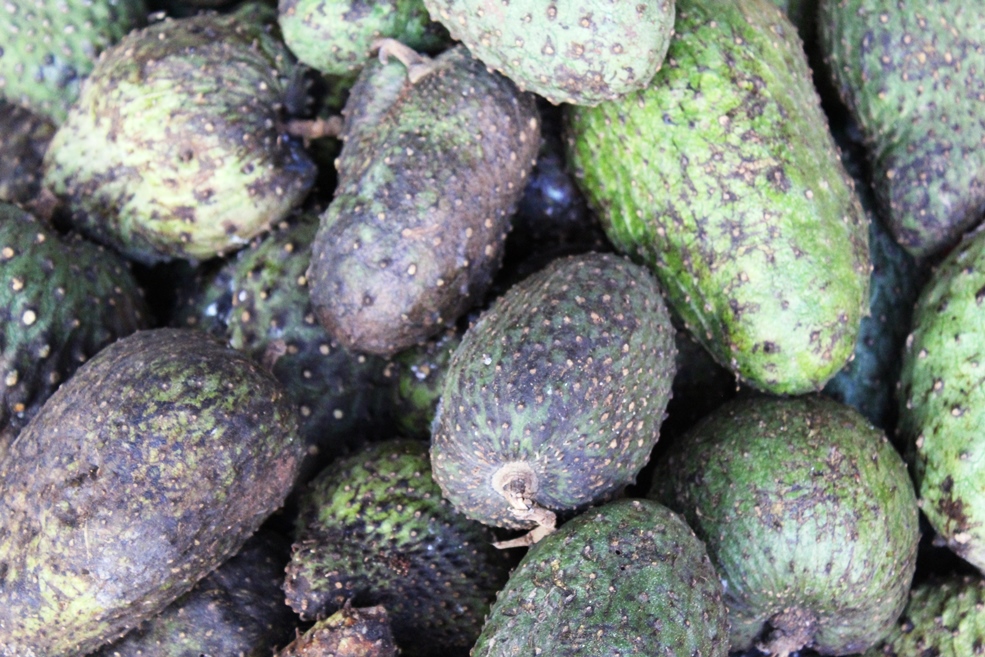
For those who are tired of lounging on the beach, Cristoffel National Park is the ideal destination. The area north-west of the island surrounds the island's highest mountain, the Christoffelberg, 375 meters high. This makes the region an ideal place for excursions.
The park also offers a splendid view of the world of the island. In addition, 150 bird species and more than 500 different plants can be admired.
It is possible to visit these caves through a guided tour.
Nearby there is an ancient path of the Caiqueto Indians that preserves engravings dating back more than 1,500 years ago. The caves formed several million years ago beneath the surface of the sea span nearly 5,000 square meters. In addition to the large limestone formations, you will find waterfalls and bats. At the end of each visit, each light in the cave is turned off for a short period of time - an exciting experience!
At the exit you can stop at the well-kept Kontiki beach, where you can rent chairs and umbrellas to enjoy a relaxing day.
The most famous - and for many the most beautiful - of Curaçao is the Seaquarium Beach. Among the palm trees that gently sway in the wind, bathers can relax wonderfully and enjoy life. Families with children and young people love to come to Seaquarium Beach because the infrastructure offers a lot. There are numerous water sports such as jet skiing, diving, water skiing and the like. In addition, bars, shops and restaurants on the dream beach.
With a tasty "Blue Curaçao" or another cocktail, there is no other place that offers such a genuine Caribbean atmosphere as here.
Little Curaçao. If you love sea excursions, this tiny, practically uninhabited island certainly deserves your attention. There you will find only a lighthouse, a beach house and huts, but, if you are lucky, you will also have the opportunity to meet sea turtles. However, you can console yourself by diving into the perfect sea for a scuba diving or snorkeling trip.
A very special jewel between the beaches of the island of Curaçao is the Playa Porto Mari. In the natural bay you will not only find the finest and whitest sand you can imagine, but also a coral reef offshore that invites you to snorkel and dive.
The underwater world is particularly rich in species and visibility is almost always good. The only thing about this place, however, is that there are two pigs here who are extremely confident. With a little luck you could catch them swimming!
There is only such a thing on a small island in the Bahamas - and on the Playa Porto Mari in Curaçao!
The small Playa Lagun is a real spearhead in Curaçao and is also one of the most popular attractions on the island. Here it can happen that iguanas and chickens walk along the sea. In the crystal clear water, countless species of colorful speleologists fish.
In addition to sunbathing and swimming, snorkeling is also worthwhile. Since there are some rocky stretches in the sea off the coast, there is always something to see underwater. After the dive you can relax on the white sand beach.
I would say that we could be satisfied with what we have seen and experienced!
At this point we can embark and set sail for the next adventure!
Let's head to the beautiful Aruba! Follow us!
Error: No feed found.
Please go to the Instagram Feed settings page to create a feed.
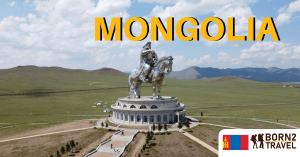
Mongolia Capitale:Ulan Bator Moneta:Tugrik Periodo migliore: Il periodo migliore per
2 Responses
Ciao complimenti per come spieghi le cose Passo con Msc solo per 1 giorni da Curacao vado con la mia famiglia ho una bambina di 2 anni cosa mi consigli di fare .
Thanks
Ciao Francesco, ti consiglierei di basarti proprio su cio’ che consigliamo in questo articolo considerando la grandezza dell’isola e il poco tempo a disposizione. Cmq sarà una bella esperienza perche’ Curacao è deliziosa!